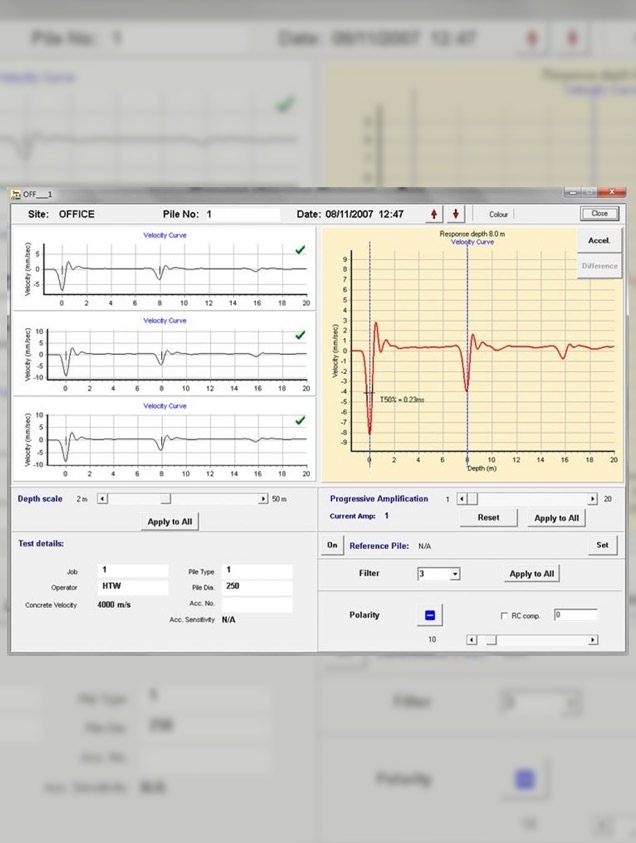
PILE CONTINUITY EXPERIMENT (PILE INTEGRITY TEST)
It is possible to control underground structures such as Jet Grout column fore pile thanks to the integrity test (Pile Integrity Test). Thus, the location and problems of manufacturing underground can be determined without opening the floor. Integrity testing is a fast and less expensive method of identifying problems. Integrity testing offers quick and less costly results compared to time-consuming and costly methods such as core drilling and excavation research.
In the pile continuity experiment, it is based on recording a reflection signal by hitting the upper part of the pile or jet grout column with a small hammer, again with an accelerometer placed on top of the pile or jet grout column. The response of the pile can be displayed immediately on the screen and stored in memory for analysis. Pile length, diameter, concrete type, floor information, working difficulties if any, manufacturing construction method, casing pipe, bentonite, etc. from the construction site authority at the construction site where the experiment was conducted. such preliminary information is taken. It is requested that the stakes are unrelated to each other, that is, singular.
In the integrity experiment, three separate records are taken for each pile according to the principle of the system. In the interpretation of the results obtained from the experiment; ground structure, pile design features and pile manufacturing method should be taken into account.
General advantages of the integrity experiment:
* The application is easy, fast and cheap. 100s of piles can be tested in a day
* The test can be applied on any pile reached.
* Disorders are at the forefront and can be discovered quickly
Issues that cannot be determined by the integrity experiment:
• Does not estimate the carrying capacity
* Small defects are not easily seen (loss and small inclusions occur in the upper layer in certain parts of the steel.)
• The length is difficult to determine for very long and very high friction area piles.
* The depression at the end of the pile cannot be determined.
